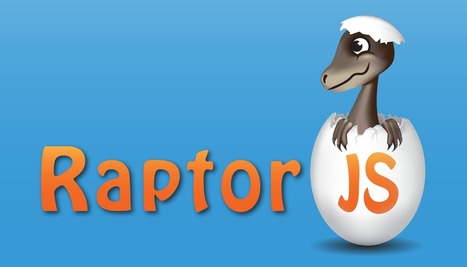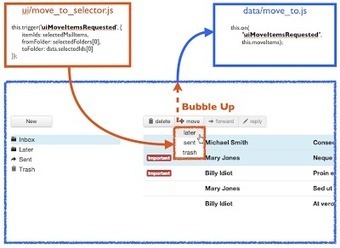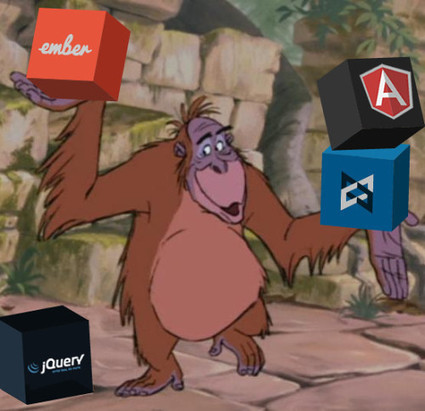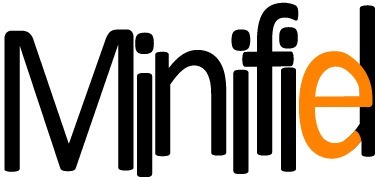Giraffe's goal is to follow the Backbone philosophy of unopinionated simplicity to provide commonly needed features with few assumptions. It differs from other Backbone libraries like Marionette and Chaplin in its reduced scope and size, and it takes a different approach to the problems of route handling, object lifecycles, event aggregation, and view management.
Get Started for FREE
Sign up with Facebook Sign up with X
I don't have a Facebook or a X account



 Your new post is loading... Your new post is loading...
 Your new post is loading... Your new post is loading...
Current selected tag: 'Frameworks'. Clear
No comment yet.
Sign up to comment
From
sailsjs
Sails.js make it easy to build custom, enterprise-grade Node.js apps. It is designed to mimic the MVC pattern of frameworks like Ruby on Rails, but with support for the requirements of modern apps: data-driven APIs with scalable, service-oriented architecture. It's especially good for building chat, realtime dashboards, or multiplayer games. During the HTML5 Track at QCon New York 2013 Matt DeBergalis gave a talk on Meteor, the open-source real-time web application framework that Debergalis co-founded. According to DeBergalis, the client versus server-side pendulum has swung many times: from the mainframe (server-side) to the desktop (client-side) to the web (server-side) and now to the modern web where clients get increasingly capable and more and more work happens in the client again. However, the tools to build these modern web applications, DeBergalis argues, have not caught up. The goal of Meteor is to provide the developer with the tools to build these types of real-time web applications more easily and consistently. Developers creating JavaScript applications these days usually use a combination of MVC, modules, widgets and plugins for their architecture. They also use a DOM manipulation library like jQuery. Whilst this works great for apps that are built at a smaller-scale, what happens when your project really starts to grow? In this talk, I present an effective set of design patterns for large-scale JavaScript (and jQuery) application architecture that have previously been used at both AOL and Yahoo amongst others. You'll learn how to keep your application logic truly decoupled, build modules that can exist on their own or be dropped into other projects and future-proof your code in case you need to switch to a different DOM library in the future.
Jan Hesse's insight:
kinda old but still worth a look to get a refreshed overview Glue is a deliberately simple JavaScript application framework, built on top of Liquid.js and jQuery. The library lets you build an application from modules. Each module is stylable with Liquid Markup. And modules communicate with the rest of the aplication through events and through shared getter and setter properties. The philosophy behind Glue is simplicity and it’s right there in the name: It’s about building modular apps with HTML, CSS, Liquid – and glueing them together with as little JavaScript logic as possible. We've all been there. You're at a tech meetup and someone is all like "Yeah I built this thing out of Cake, Celery and Varnish" and you've no idea if they're talking about web frameworks or some kind of horrific dessert. Well wonder no longer!
A modern browser development toolkit. JavaScript, CSS, and template compilers, linting, optimization, serving, RequireJS support, and Live Reload built right in. Pluggable for authoring your own functionality.
Jan Hesse's insight:
As far as I can tell It's a huge toolkit for WebApp production. Think of Metro.js competition. Boilerplate sample: Flight is distinct from existing frameworks in that it doesn't prescribe or provide any particular approach to rendering or providing data to a web application. It's agnostic on how requests are routed, which templating language you use, or even if you render your HTML on the client or the server. While some web frameworks encourage developers to arrange their code around a prescribed model layer, Flight is organized around the existing DOM model with functionality mapped directly to DOM nodes. The-M-Project is a Mobile HTML5 JavaScript Framework that helps you build great mobile apps, easy and fast. The-M-Project is Open Source Software published under the MIT License. This gives you total flexibility for your development. Build great free and commercial apps with it. Rye is a lightweight javascript library for DOM manipulation and events with support for all modern browsers, including IE9+. It has support for touch events/gestures, an event emitter, isolated DOM events and more. log4javascript, a logging framework for JavaScript based on log4j When writing a web application from scratch, it’s easy to feel like we can get by simply by relying on a DOM manipulation library (like jQuery) and a handful of utility plugins. |
Minified.js is a client-side JavaScript library, comparable to jQuery and MooTools in scope. Its features include DOM manipulation, animation, events, cookies and HTTP requests. Minified Util offers utilities for lists and maps, functions, promises, string and number formatting, date handling and internationalization. Its scope and size can be compared to Underscore, but it omits the more obscure functional helpers and replaces them with date and string helpers. Minified App will be a MVC-oriented library for single-page applications and complex multi-page apps. The scope will be somewhat similar to Backbone or Angular.js, but with a Plain-Old-JSON-Object (POJO) principles and a template/binding concept that is closely tied to the page's DOM and is well prepared for HTML5 templates. It is built upon the other two modules.
From
github
frontend-dev-bookmarks - A huge list of frontend development resources I collected over time. Pull requests are welcome. Website coming soon. * Guides * Architecture * Workflow * Frameworks * CSS * Cross Browser * Cross Device * Patterns & Snippets * Typography * Services * Programming & Markup Languages * Animation * Widgets * Visualization * Validation & Forms * Transitions * Testing * Template Engines * Routing And URLs * Code Viewers & Editors * Performance * Modularity & Loaders * Package Management * WebSocket * Documentation * Windows 8 Style * Scrolling * Tables & DataGrids * Security THE REAL MVC. THE SMALLTALK MVC. THE GANG OF FOUR MVC. The three core design patterns of MVC (observer, composite, and strategy) are embedded in Maria's Model, View, and Controller objects. Other patterns traditionally included in MVC implementations (e.g. factory method and template) make appearances too. Polymer is a new type of library for the web, built on top of Web Components, and designed to leverage the evolving web platform on modern browsers. Polymer is comprised of two efforts: - A set of core platform features (Shadow DOM, Custom Elements, MDV). Initially, these core features will be enabled with a set of polyfills. As browsers begin to implement these new primitives, the polyfill platform layer becomes smaller and better over time. - A next-generation web application framework built upon these core technologies called the Polymer. One of the killer features of KidoZen is the mobile line of business(LOB) APIs. This capability extends our mobile backend as a service (mBaaS) layer by enabling the integration with corporate system whether those are hosted on-premise or using a SaaS models. Using our line of business APIs developers can build enterprise-ready mobile apps that seamlessly integrate with corporate systems without having to figure out the intricacies using a super simple and mobile-first model. A quickly reference to the best practices of JavaScript, code patterns and tutorials links over the web The definitive javascript library for mobile HTML5 app development
Jan Hesse's insight:
Did you know jQ.Mobi has become Intel App Framework? It's still Open Source but officially pushed by Intel. That should give it a stable future. Optimized for WebKit, you don't need jQuery no more... abaaso is a lightweight Enterprise class RESTful JavaScript framework pager.js is a JavaScript library based on KnockoutJS and jQuery that provides the possibility of creating single page applications in a declarative fashion - nesting subpages inside subpages where each subpage can be developed standalone but still communicate between each other. This makes it easier to design very large scale single page web sites.
Lavaca has a ton packed into it, and is designed to work well as a cohesive whole, while still remaining lightweight. Lavaca is built with extensibility in mind and allows you to easily extend components and build your own on top of its framework.
mout is a collection of modular JavaScript utilities that can be used in the browser as AMD modules or on node.js (without any overhead). It provides many helper methods similar to those found on other languages standard libraries (ie. |

























